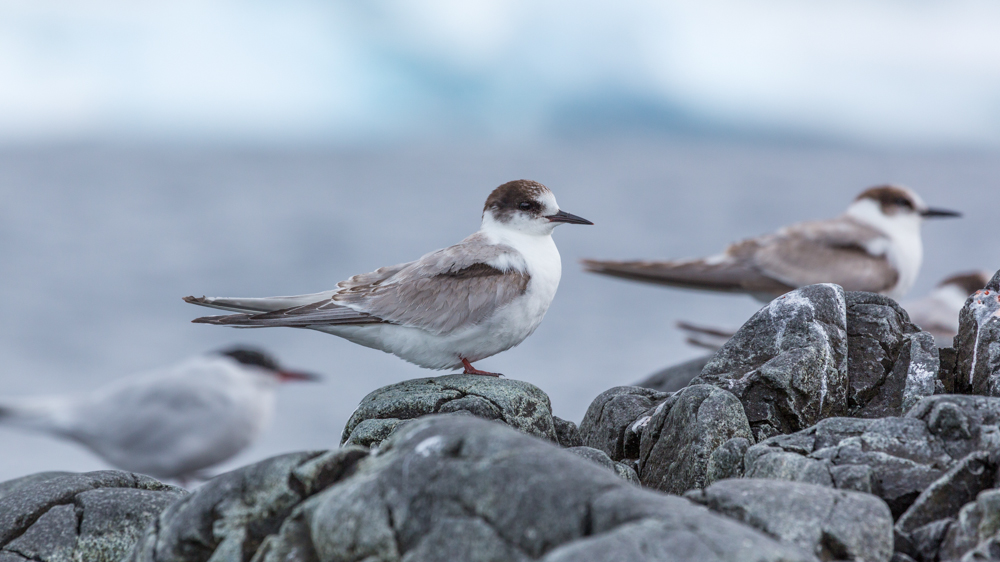Arctic Tern in Alaska
On my recent trip to the Antarctic Peninsula I was fortunate to see an old friend. It is always a pleasure to see other Alaskans traveling the world, and seeing these Arctic Terns in the southern hemisphere was a highlight of the trip.
Like most naturalists in Alaska, I admire Arctic Terns for their tenacious defense of their nests and for their famous pole to pole migration. But though I have have told hundreds of people about how each fall Arctic Terns fly from Alaska all the way to Antarctica, I’ll admit I didn’t understand the details of that astounding aerial feat nor the complexity of the journey.

Arctic Terns in Antarctica (Kathy Richardson Photo)
Arctic Terns are small birds with a wingspan barely over two feet, but during their often 30 year life span, they can fly 1.5 million miles. That is as far as from the earth to the moon and back 3 times. Efficient flight mechanics and rich feeding grounds make these astounding migrations possible. And even more remarkable, despite the long journey and many dangers encountered along the way, adult terns have a 90% annual survival rate. Their epic journey halfway around the world appears to be no big deal for these tough little birds
While less is known about Arctic Terns from Alaska which apparently fly along the west coast of North America en route to the southern hemisphere, there was a widely publicized study in 2010 in which researchers attached transmitters to 10 adult terns in Greenland. This study found that after spending several weeks foraging in the rich waters of the North Atlantic that the terns then flew south along the European coast, but that some of the birds then recrossed the Atlantic and followed the South American coast to Antarctica. Once in Antarctica, terns feed on abundant forage fish in the Weddell Sea.
When spring returns, terns tend not to dally and will fly up to 300 miles per day on the northward migration. The timing of breeding is critical and terns that intend to breed in a given year, (Terns occasionally skip a year of breeding) make a B-line for their breeding colony and arrive just as the snow melts in the spring.
So next time you are strolling along a gravel bar and a tern dive bombs towards your head, turn around and give the poor bird some space. My old friend likely just flew more than 10,000 miles to get there.
Learn more about the migration research in this video:
By Michael Wald, Owner and Guide


